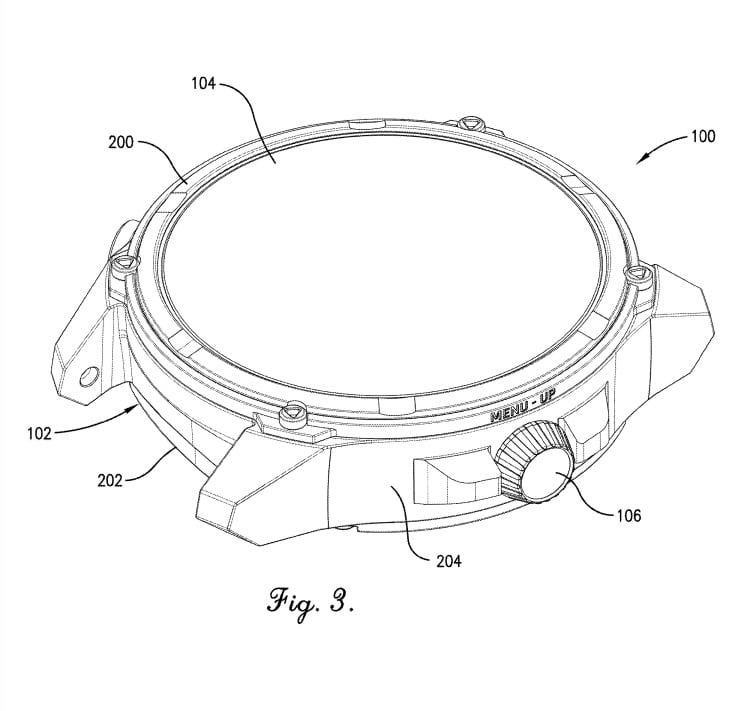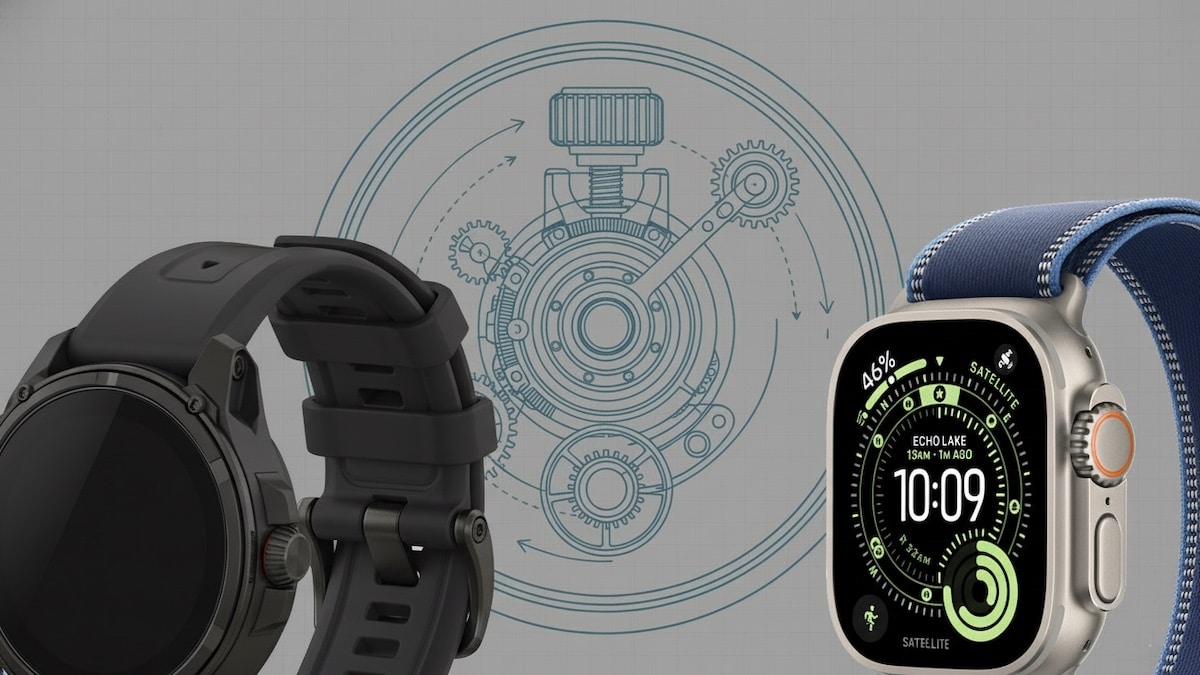Garmin’s got a new patent out for a magnetic crown that works without needing a hole in the case. Apple’s Digital Crown on the Watch Ultra still uses the classic shaft-through-the-side setup, but Garmin’s idea avoids some of the issues that come with that approach.
The problem with physical holes
The crown on the Apple Watch Ultra is smooth, intuitive and precise. But it’s also built around a design that involves a mechanical shaft passing through the case wall. That’s a well-understood engineering solution, and Apple has refined it over years. But it does rely on seals like O-rings or gaskets to keep the internals protected. These parts hold up well under normal use, but they’re not invincible when exposed to high water pressure, salt, sand or long-term wear.
That physical connection, between an external rotating knob and the inner sensors, is what Garmin appears to be challenging. As noted in our earlier coverage, the patent describes a control mechanism that operates entirely through a solid wall. It uses magnets embedded in the rotating outer crown and a Hall effect sensor inside the sealed housing. The two never touch. There’s no shaft or rubber seals, which means there is no break in the case integrity.
This is a notable shift from Garmin’s usual button-heavy approach. Five-button control layouts are reliable and proven, but they don’t always offer the fastest way to scroll through topo maps or long data menus. A scroll wheel with decent waterproofing would be a welcome change. If Garmin can pull this off, it might become the preferred input method for use cases where grit, moisture and pressure routinely get in the way of traditional controls.
 Garmin patentA different take on durability
Garmin patentA different take on durability
Apple hasn’t officially detailed how its Digital Crown works internally, but teardown sites and older patent filings give us a decent idea. The Watch Ultra likely uses a mechanical shaft connected to an internal rotary encoder. In some designs that might be optical. Either way, the shaft passes through the housing and depends on precision sealing to protect the electronics.
Garmin’s idea skips all of that. The rotating component stays outside. Inside, a solid-state Hall effect sensor picks up changes in the magnetic field and translates that into input. It’s the kind of mechanism that could theoretically work even at serious depths or in murky water. The housing stays intact, and there’s nothing for salt or sand to work their way into.
That said, this is still a patent. There’s no product yet. Garmin has done this before – filed designs that never showed up in consumer hardware. So while the concept looks strong on paper, real-world testing will be what matters.
Feature
Apple Watch Ultra
Garmin patent design
Core mechanism
Shaft through case wall
Magnetic coupling through sealed wall
Input sensor
Rotary encoder (possibly optical)
Hall effect sensor
Sealing approach
O-rings and gaskets around shaft
Fully sealed wall, no penetration
Durability trade-offs
Proven but depends on perishable seals
No ingress path, but untested in market
Tactile feedback
Mechanical with haptic engine
Snap dome click built into button
Feedback that still feels like a click
One of the common complaints with magnetic buttons is that they feel soft or imprecise. Garmin seems to be aware of this. The patent includes a snap dome in the button design. That’s a small metal dome that collapses under pressure and then springs back, creating a clear tactile response. So while the crown is magnetically coupled, pressing it would still deliver a crisp click.
This would be especially useful in Garmin’s Descent dive computer range. Right now, navigating menus underwater means jabbing stiff buttons repeatedly. A sealed scroll wheel with good tactile feedback could speed things up, and potentially allow for more intuitive control without compromising pressure resistance.
A calculated bet
Garmin is unlikely to match Apple’s haptics or ultra-fine scrolling feel right away. But that’s not really the point here. What they’re aiming for is ruggedness. The ability to interact with your device in tough conditions without worrying about something getting inside and damaging it.
Apple’s design is precise, and it works well for its users. Garmin’s approach leans into their strength – building devices that hold up in remote, wet and rough environments. If the magnetic crown ever makes its way into a shipping product, it could shift how we think about input on rugged watches. Until then, it’s a clever bit of engineering that might just become the missing link between usability and full sealing.
Subscribe to our monthly newsletter! Check out our YouTube channel.
And of course, you can follow Gadgets & Wearables on Google News and add us as a preferred source to get our expert news, reviews, and opinion in your feeds.

